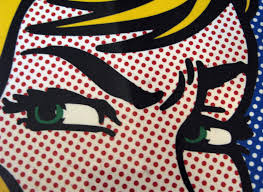When Art Insurance & Art Appraisals Are Important | Junzi Fine Art
 Posted on December 2, 2015
Posted on December 2, 2015
 by socialmedia
by socialmedia  0
0 As a specialist of fine art at the Hong Kong based firm Junzi Fine Art Consultants, Serina Manqueros has worked with artists, gallerists, auctioneers, art advisers and collectors in USA & abroad. The business of art insurance is entirely dependent upon each individual’s situation. In an interview she shares the insights of appraising art, and importance of risk management.
At what stage should an artist or collector think about getting an appraisal or insurance?
I have less art and it is not worth millions but insuring it has a lot of benefit. Another benefit is partial loss coverage, the piece you have gets damaged and your insurance can pay for the conservation. Different art has its different appraisal needs, it’s situational. In contemporary we take three years and in other we take three to five years its general rule.
What does appraisal process involves?
We start by visiting the on-site to clear any specific appraisal of the client. At this stage we look at how artwork is stored and how much is there. We are looking at a fire safety, handling and shipping. Artist is concerned about the work at exhibition but we are concerned HOW it reaches there. 80% risks occur at transit, transportation is responsibility. I have concerns regarding where the artist will be in the next five years? There are risk management concerns that are to be taken to account.
What is important when the artist gallerist and collectors get their work appraised?
It is not something done in 24 hours, and once appraiser is on-site then it takes around one to six months to the appraisal and its requires maintenance and research. If you have purchased in last year or you are new collector then we insure your artwork. There are experts in the industry and it’s not as easy like the antique road show, they charge expert fee. Get organized for the appraiser to arrive at the on-site. If he/she is pulling stuff from the basement you will be charged of that. Prepare any documentation for the artwork. Do research so it will take less time for appraiser to search about your collection and that will save you money.
It is important to appraise any unfinished works?
Insurance of an unfinished artwork is a challenge to know, who is the artist? How long has he worked and what is the value of the piece. This information can help in creating structure policy, but difficult to make blanket statement. Appraisal needs are individual and situational.
When working with vendors the difficulties?
I like working with clients where we both are honest, its clearer and a few years ago multiple would buy shares in on piece of art. We need to know about the intentions of the person. If you’re comparing work like $100,000 to $500,000 to your insurance is worth $30. Many dealers hide about how much they are shipping domestically and internationally because they know they will get slammed with high premium. If you don’t tell me the truth then I can’t help you with insurance. I manage risks and you will have to pay big fines for this so come forth with the truth, so I may help your art stay for long time.
Why is it important to track and manage collection?
The art market doesn’t work like what was 20 years ago. Dealers do not take care of them in market. The artist should know about the buyers and his art being auctioned. Last 10 years best artists have kept track of their sales. From insurance point you are at low risks if keeping track of your business and artwork.
We have strong believes on disclosure and artwork tracking. For that we have partnered up with artwork archive to get 20% discount. Do you have other advices for artists?
Artists we work with have studio manager, accountants, consult with lawyers, and consignment agreement with galleries. Basically they are in good shape. Establish your studios with a business that feels mentality right for the get and go.
You must be logged in to post a comment.


